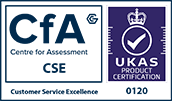Papers of Barbara Bruce
Archive reference: Cwl BBR
This Commonweal Archive tells the story of an English Quaker nurse who became, in her own words, a "wild woman of India". She was committed to the Gandhian ideals of sarvodaya (commonweal) and satyagraha (nonviolence), and her surviving letters bear witness to an extraordinary period of history. Discover her story through this article in our 100 Objects exhibition: Weaving a Story: a wild woman in India.
Barbara Bruce
Barbara Hartland (1906-1976) was a British Quaker and sculptor, who spent the 1940s working in India. A trained nurse, she volunteered at the Friends' Mission Hospital in Itarsi, arriving in 1939. There she immersed herself in Indian life and culture, and formed networks with other Quakers and Indian and European individuals interested in Gandhi's ideas. In 1941, she spent some months at an ashram and university at Santiniketan in Bengal, where she helped nurse Rabindranath Tagore. After his death, she returned to Itarsi, though as an independent volunteer, living with local people. She was a relief worker with the Friends' Ambulance Unit in 1943-1944 following a cyclone in Contai. Between 1945 and 1950, she helped run the ashram and village created by Gandhi at Sevagram: her roles included nursing superintendent, midwifery and running the dispensary.
In 1950, she returned to Britain, where she married Harry Bruce. She did not return to India, but maintained close links with her friends and co-workers, in particular with the Fellowship of the Friends of Truth, established in 1949.
The Archive
The Archive was acquired by the Commonweal Collection in 1998-1999. It contains over 500 letters and postcards from India. The 41 letters written by Barbara to parents and close family from India are particularly rich in detail about Quaker activities in India, the life and culture of the period, politics, and how the Gandhian constructive programme was taken forward in central India. Barbara's visual awareness is shown by many tiny photographs of India, with subjects including temples, archaeological sites, landscapes and people, and by her sketchbook. Post-India material includes papers relating to the War on Want Freedom from Hunger campaign in support of the Bhoodan movement in India. Barbara learned to spin and weave in 1942, as part of the Gandhian ideals of self-reliance: a handwoven bag and wooden implements survive.
The Archive was catalogued as part of the PaxCat Project, with support from the National Cataloguing Grants Programme for Archives.
Cwl BBR Papers of Barbara Bruce catalogue 2010
If you require this information in an alternative format, please contact our team. You can also read our Website Accessibility Statement.


